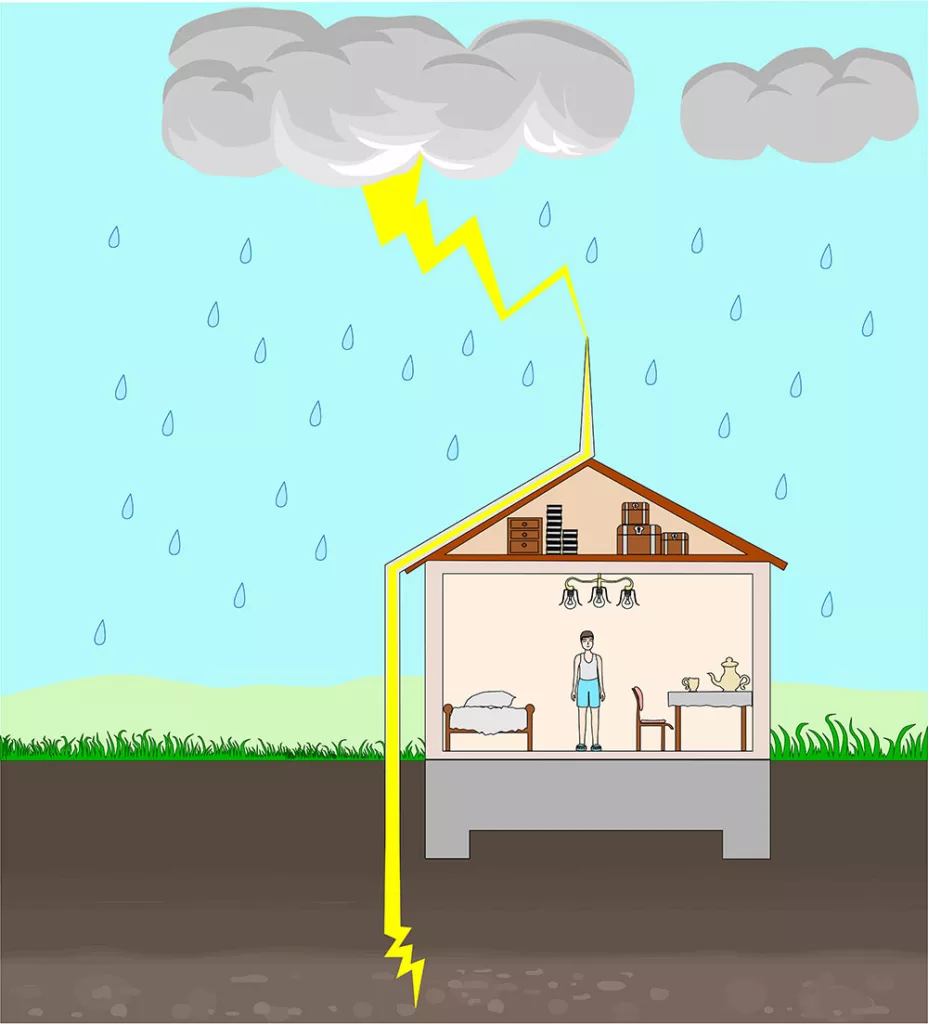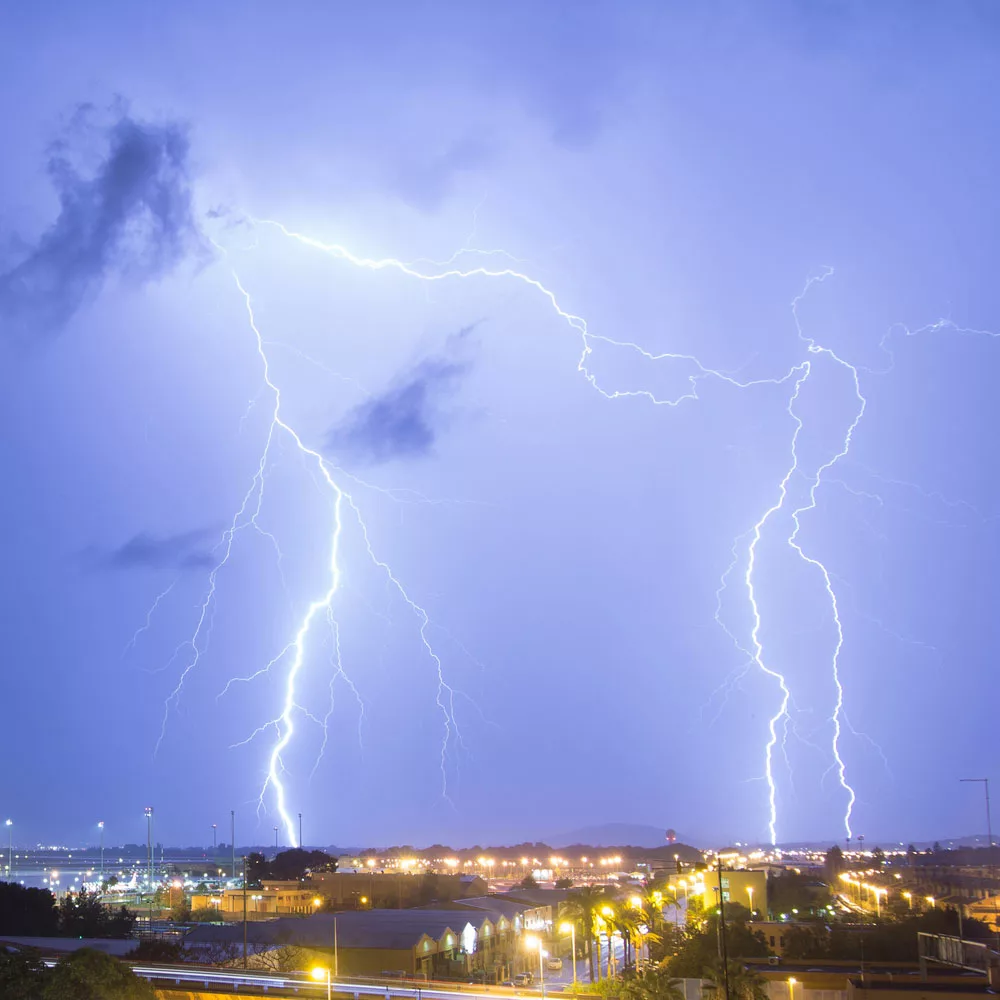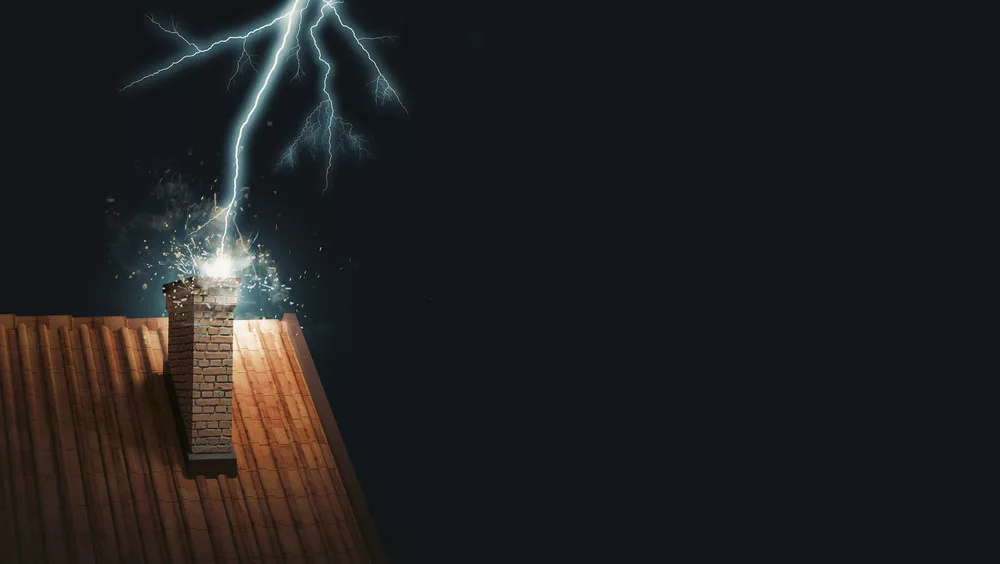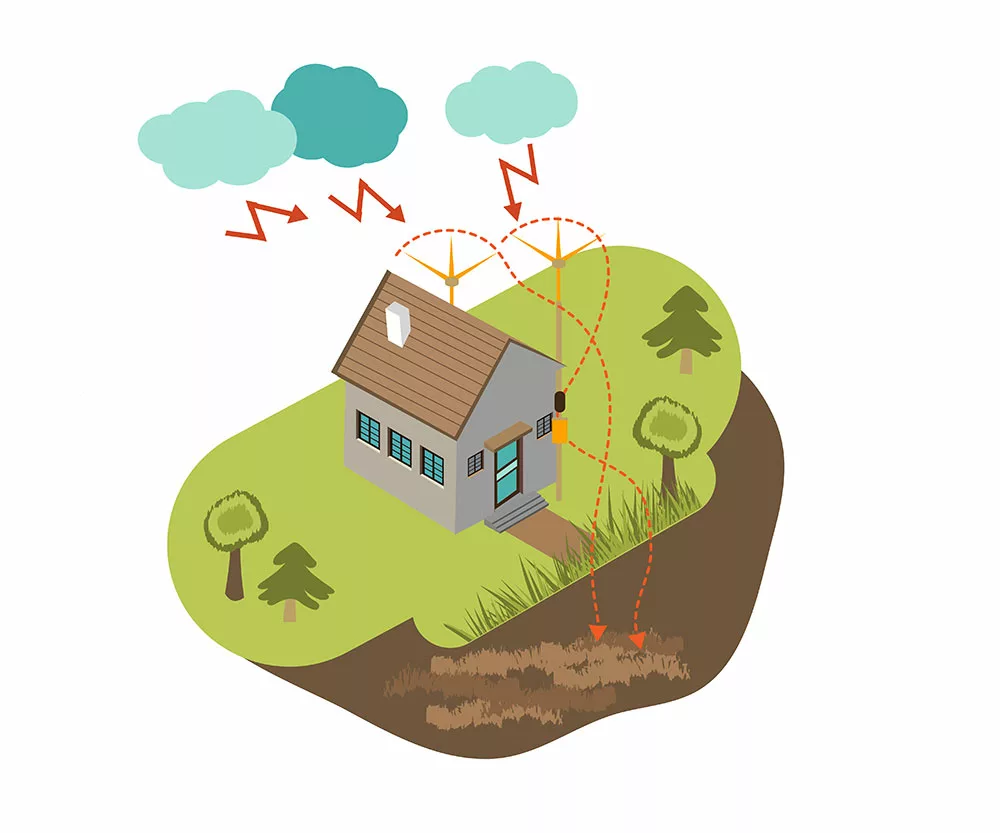Are you wondering what a lightning conductor is? Lighting conductors are an important part of a lightning protection rod system.
Lightning conductor systems help protect buildings and their occupants from lightning damage.
For example, if lightning storms strike a building, the current will travel through the metal rod. Then, it will travel into the ground instead of staying in the building.
This article will go through how lightning conductors work, the different types, and why installing lightning protection rods is important.
What Is a Lightning Conductor?
The lightning conductor consists of the lightning rod, which is on the top of a structure. And the earth’s connection point is deep in the ground through copper cable.
When lightning strikes, the conductor channels the electricity safely in a path to the ground instead of passing through the building, which minimizes the risk of damage or fire.
The scientific reason behind this is that electricity always takes the path of the least resistance.

Lightning rod on the house
How Does It Work?
Blunt-tipped lightning rods work due to the phenomenon of induction. For example, the electric charge passes by a building.
Then the electrical charge of the conductor becomes opposite to it through induction.
Additionally, the rod has an electric field length taller than the physical length.
In the large electric field, the air becomes a conductor. It helps to act as an air contributor to help discharge clouds.
The outer layer of the storm clouds is full of high-density ionized electrons. This negative charge around the lightning rod equals the cloud’s charge.
This phenomenon pulls lightning bolts towards opposite charges on the outer layer of the conductor. It creates a virtual pathway for lightning.
This way, it discharges its high electrical potential along the lightning rod.

A lightning bolt
Functions of Lightning Conductor
Besides diverting lightning away from buildings, lightning conductors also have other important functions.
First, lightning conductors help to cut the current flow into the structure. It does this by providing a low-resistance path to the ground. It prevents any fires or electrical damage that occur from higher electric currents.
Second, they protect surrounding buildings by preventing the spread of fire.
Suppose one building does get struck by lightning. The lightning conductor system helps to prevent it from spreading elsewhere.
Finally, they reduce individuals’ electrocution risk during a lightning strike.

Lightning striking a house roof.
Can Lightning Protection Systems Help Me Save on Insurance?
Some systems that meet the criteria and earn an insurance credit include:
- Main Conductors: These cables connect blunt lightning rods to the ground. They are from conductive materials such as aluminum/copper braiding.
- Ground Rod: You can drive these rods deep into the earth. Thus, you can divert harmful lightning currents away from your property. (Some installation methods may be necessary depending on soil type.)
- Tree Protection: If trees on your property are taller than your house, there is a risk of a lightning strike. Installing a lightning protector can reduce that danger.
- Surge Protectors, Suppressors, and Arrestors: These devices can protect your electronic devices from damage. This damage can be from power surges, including those caused by actual lightning strikes.
- Lightning conductor rods or air terminals are available in flat strips or bristle brush-like. These are metal rods on rooftops and tall structures. They work by intercepting a strike before it hits your home or business. Then channeling it into the ground, where it dissipates.
- Bonded wiring: This type creates a pathway for lightning termination strikes, which keeps your property safe.

Lightning protection
Is It Necessary to Install a Lightning Rod?
The decision to install a lightning protection system is yours. But it can help protect your property from the risk of lightning strikes.
These systems are easy to maintain and can provide peace of mind as you know that your home or business is safe from lightning-related damage.
Some insurance companies even offer discounts for homes with lightning protection systems. So, you may be able to save some money as well. The choice is yours!
Summary
Whether you install lightning protection or not, be aware of the risks of lightning. When you use them, they can help protect your property from lightning strikes.
Plus, you may even get some insurance credits for installing them! Remember that you always need to follow local codes.
Also, follow regulations when installing lightning protection systems. We hope this article has helped. If you have any questions, please get in touch with us.
